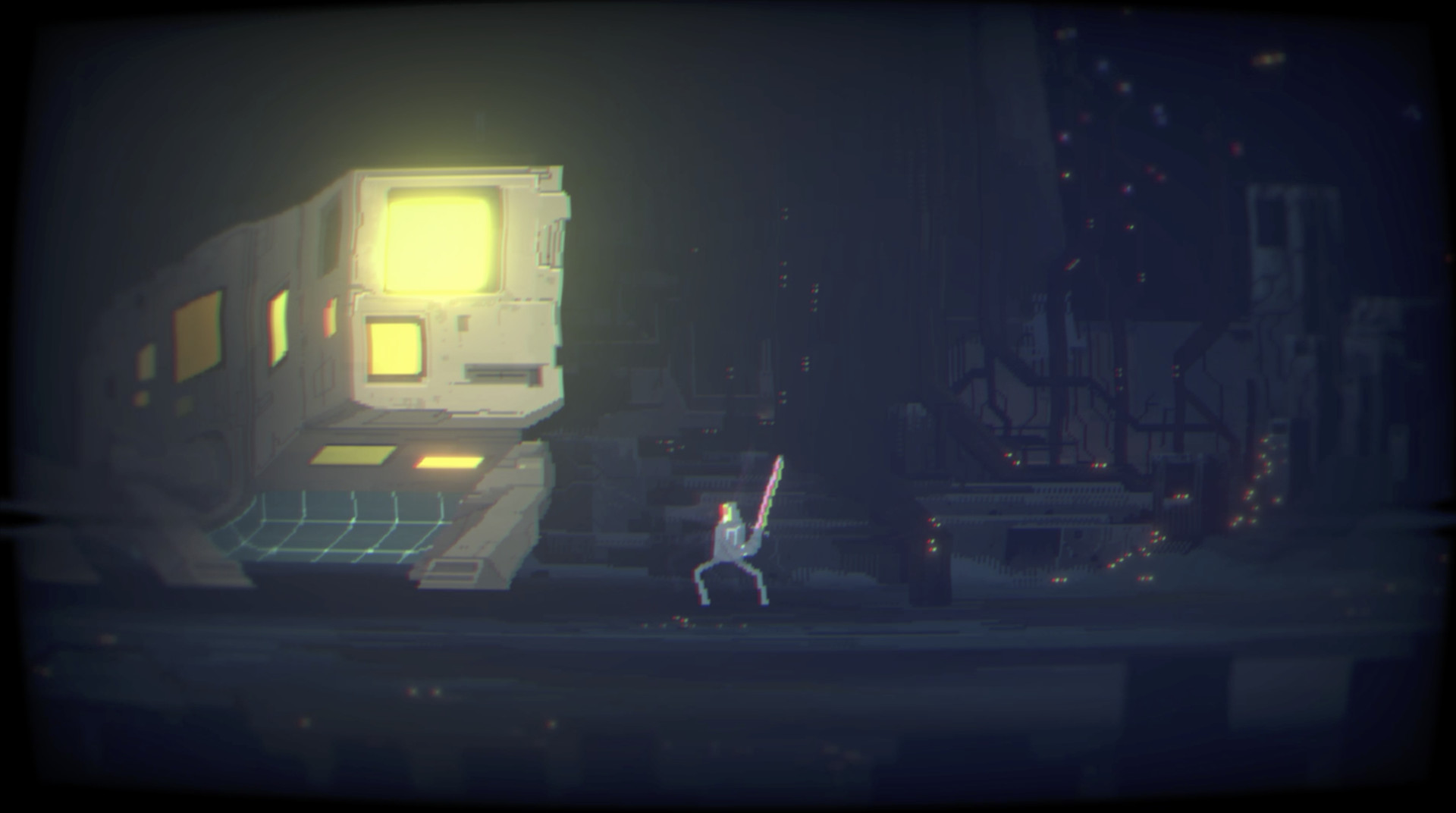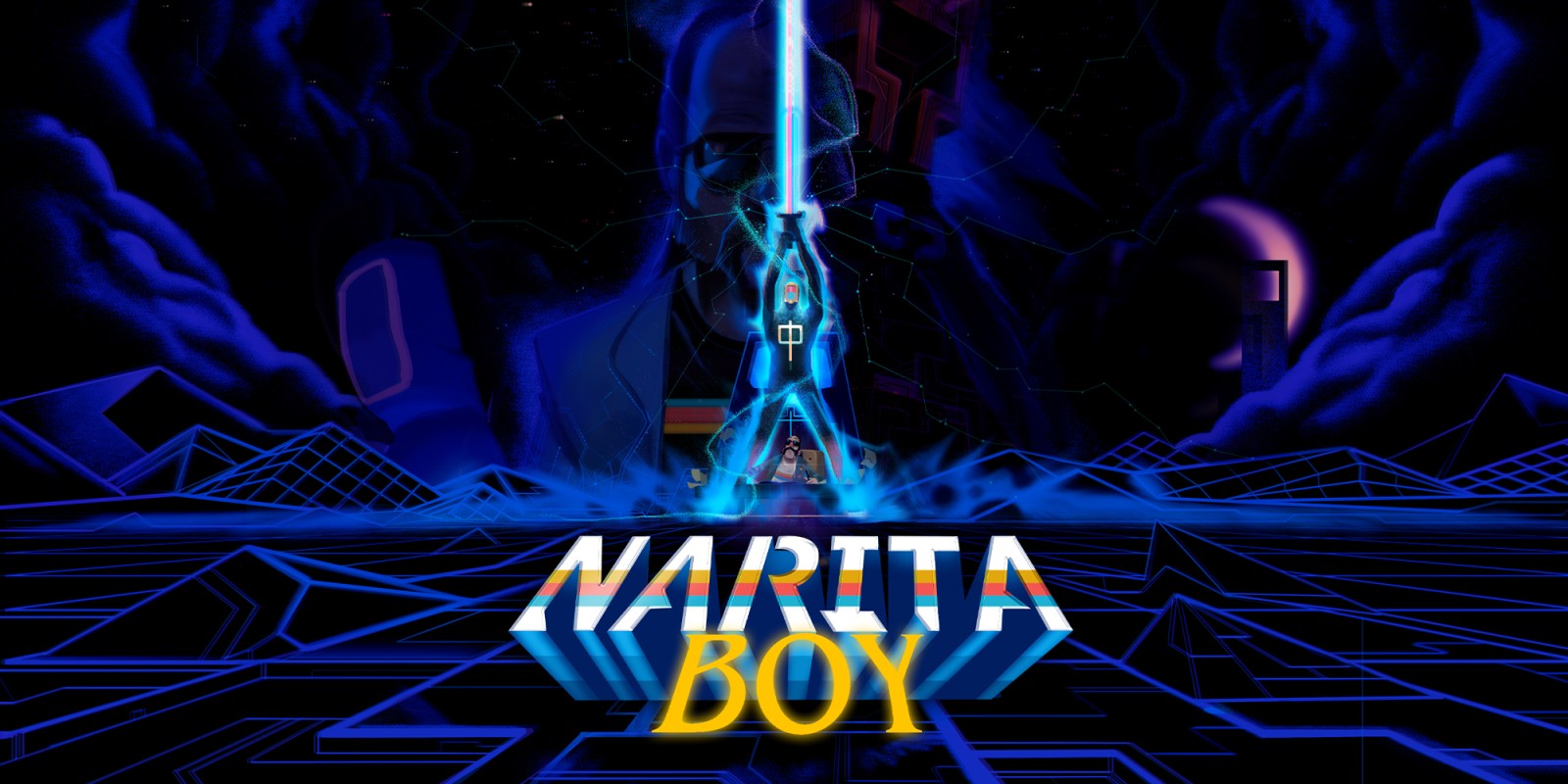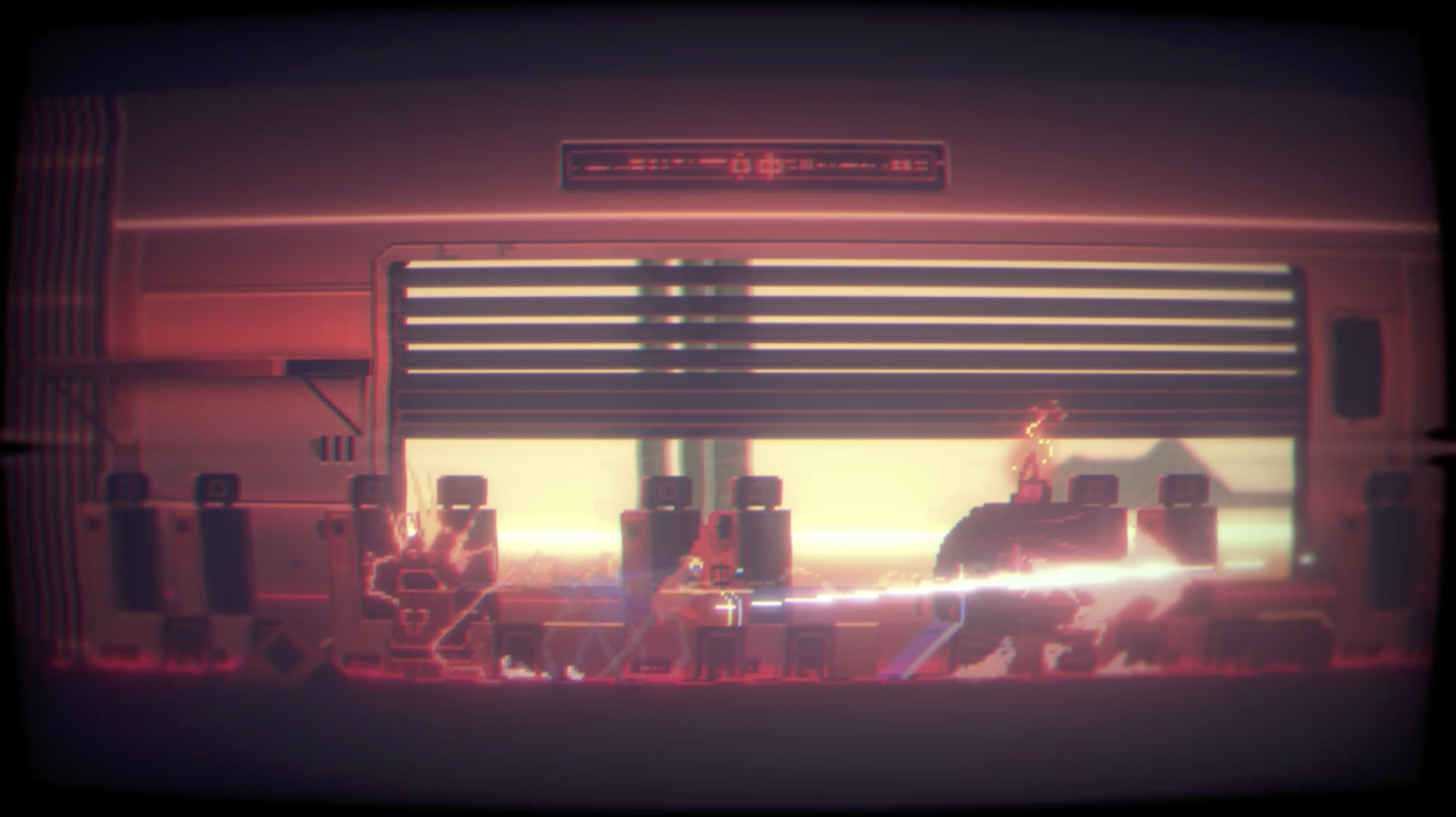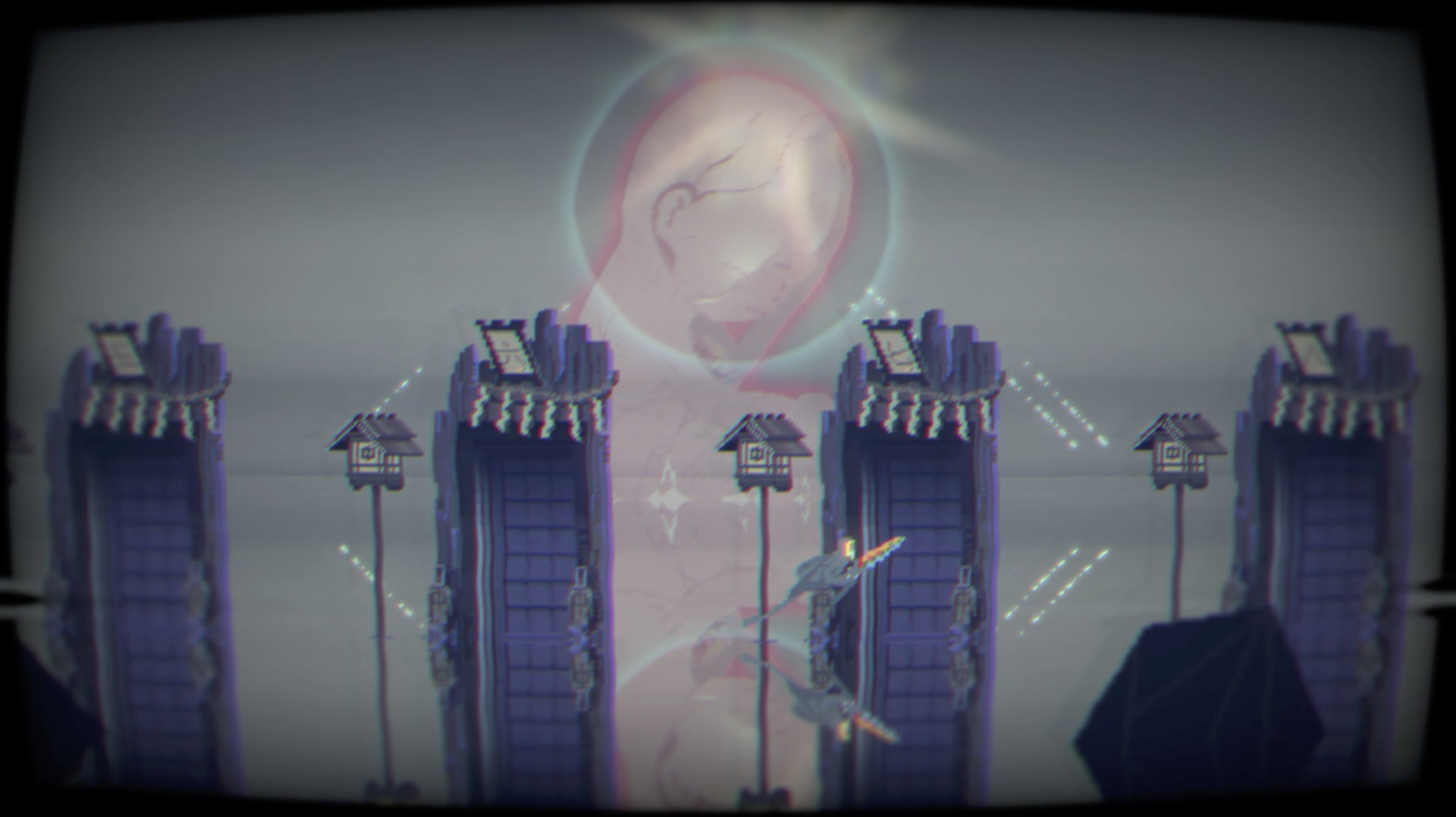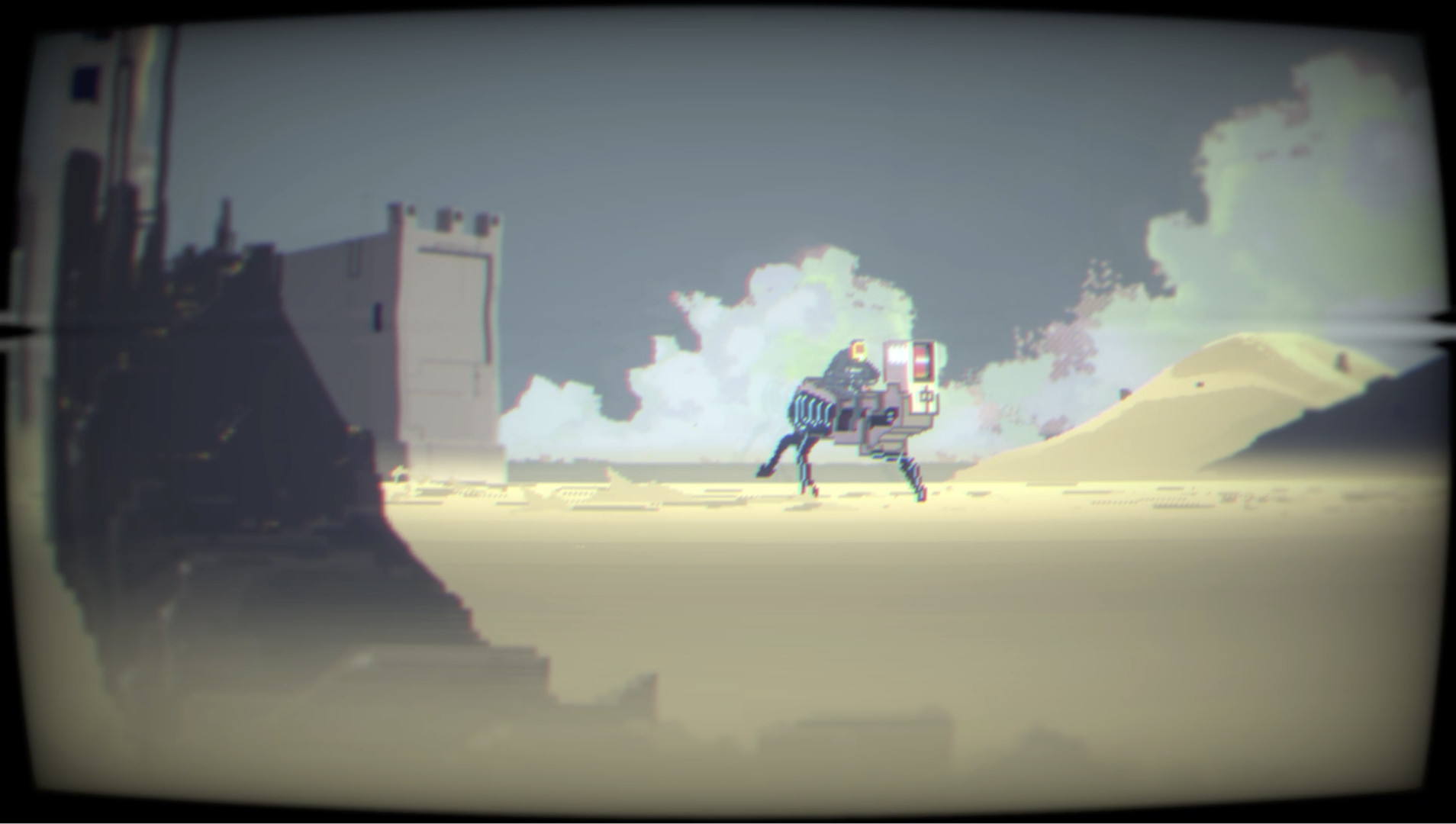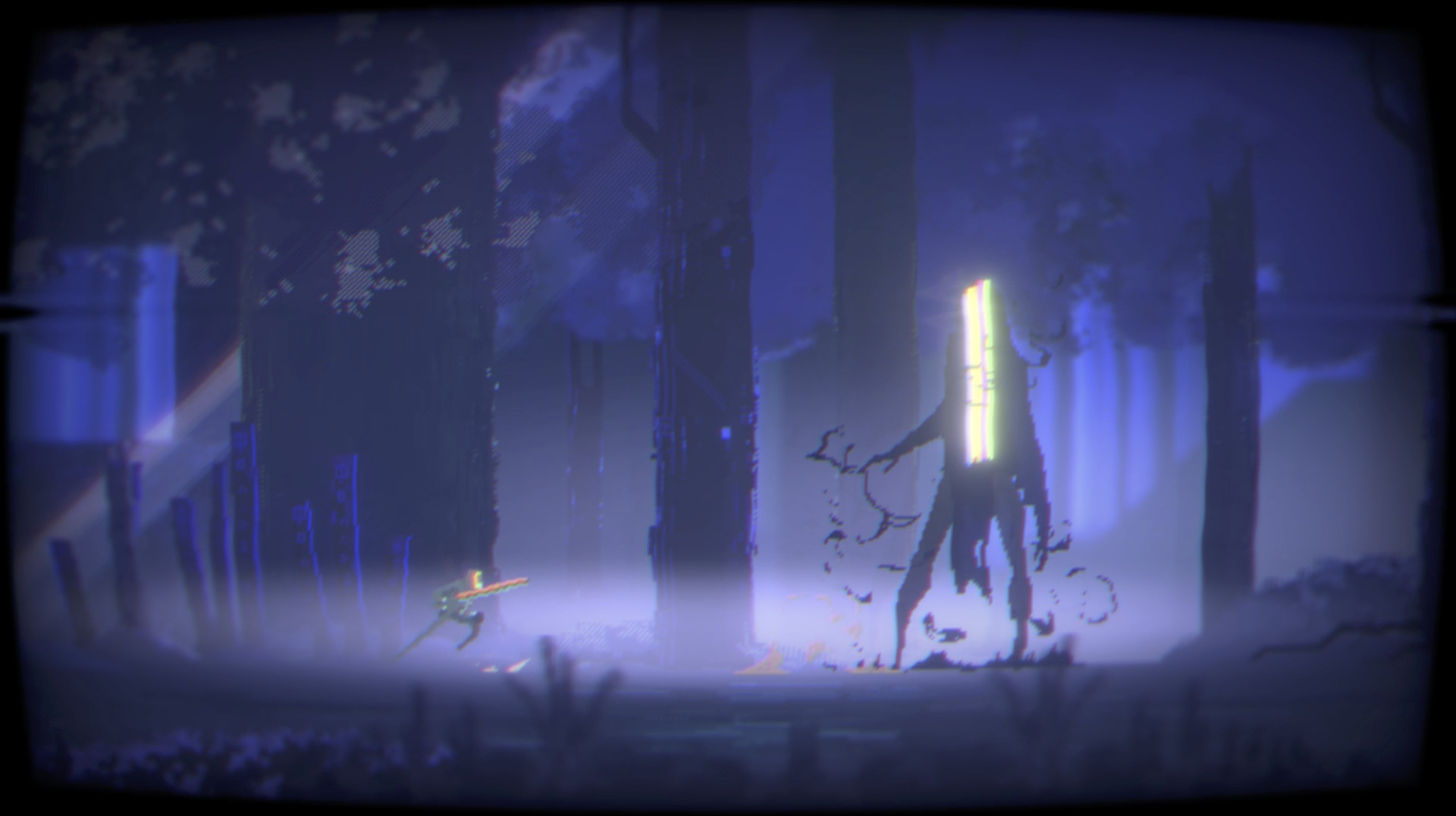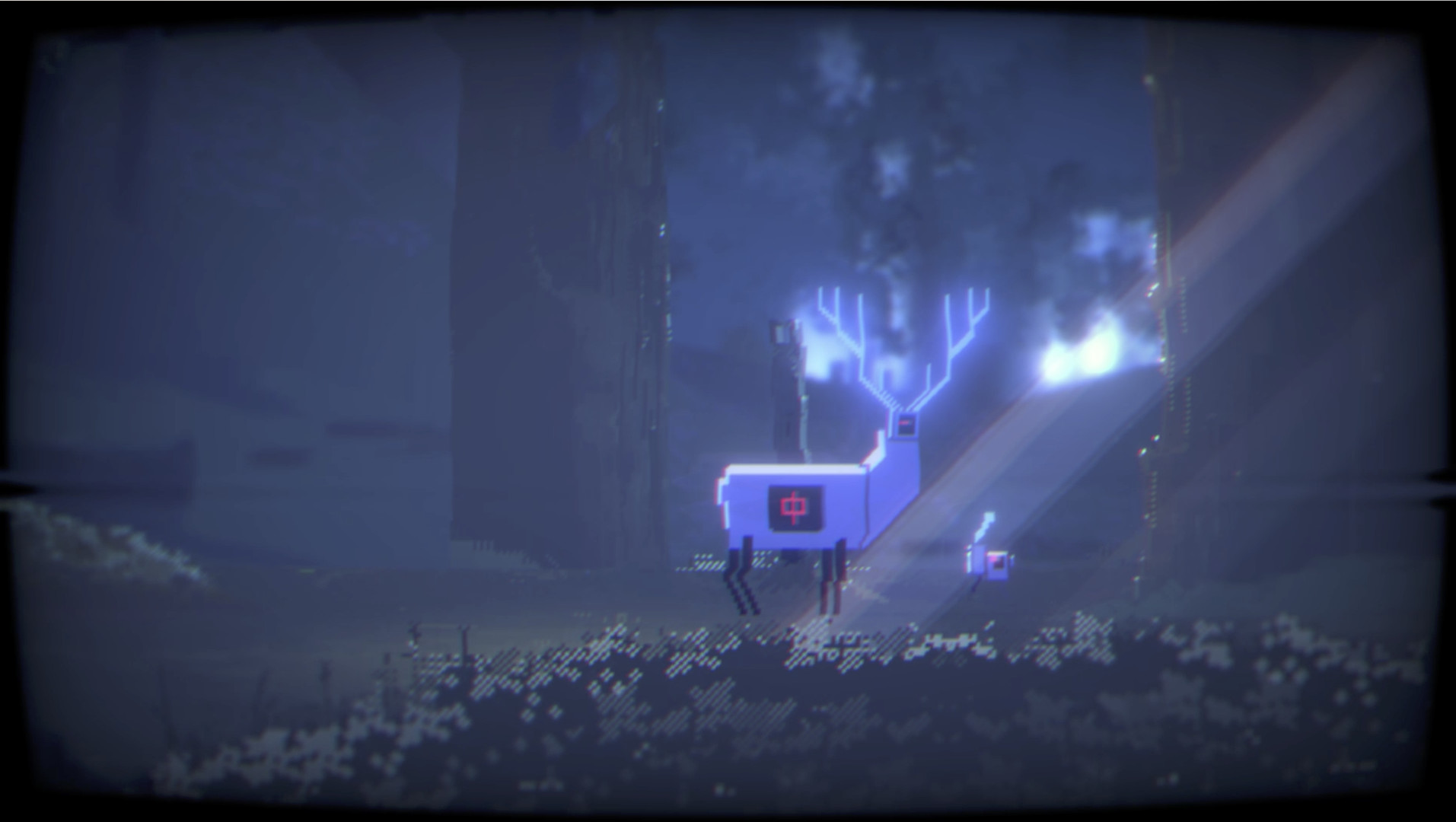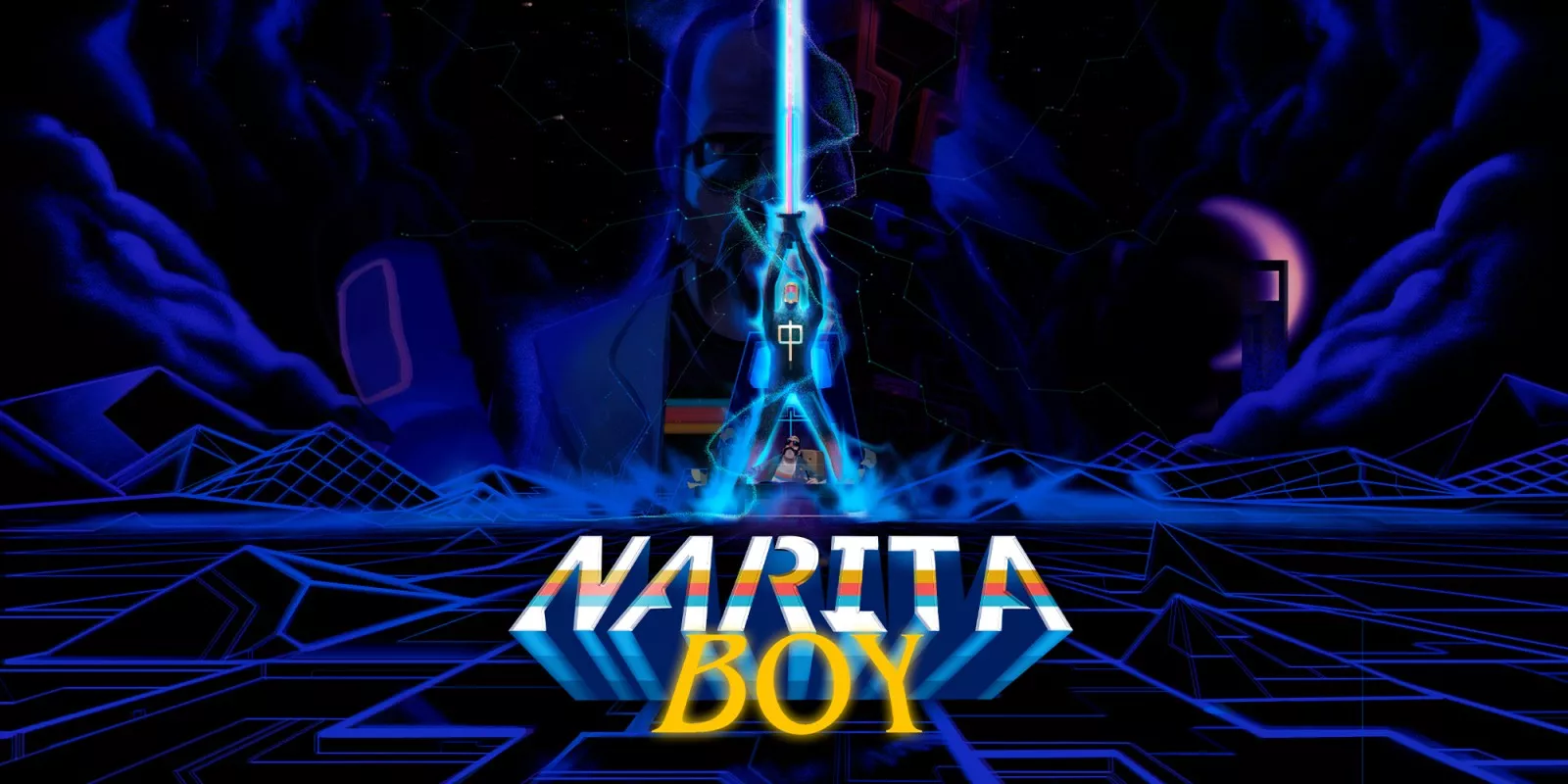I am very much a child of the 80s. A time when hair styles were wild, politics were bleak, and when the world started to become absolutely enamoured with computers. Spearheaded by a boom in special effects that produced legendary films like The Empire Strikes Back and Bladerunner, sci-fi ruled the decade, and with home computers also becoming more prevalent, imaginations were stoked by the onrushing digital age like never before. Inspired by this era filled with bleak futures and bright flashing lights, Studio Koba created Narita Boy, a swashbuckling platform adventure that sees a digital hero fight to protect his creator from an evil binary threat.
At A Glance
| Scores | |
| Visuals | 8 /10 |
| Sound | 9 /10 |
| Gameplay | 7 /10 |
| Overall | 8 /10 |
| Positives | + Wonderful 80s-inspired pixel art & dystopian visuals + Stylish & memorable cast of characters & enemies + Deep & engaging story underpins a playful experience |
| Negatives | – Over enthusiastic movement & some button delays – Can sometimes be hard to discern platform edges – Computer jargon unnecessarily confusing |
| Price (When Reviewed) | £19.99 |
| Our Playtime | 6 hours 40 mins |
| Available On | Nintendo Switch, PC, Xbox One, PS4 |
From the moment you turn it on, Narita Boy oozes 80s style, smacking you right between the eyes with a title screen inspired by Star Wars: A New Hope and Tron – two particular favourites from my childhood. The intro sees a middle-aged computer programmer at his desk – scarfing down ramen between keystrokes – when his code begins to corrupt right before his very eyes. A sinister robed figure then appears and, reaching out from within the screen, strikes the programmer, causing him to lose his memory. There’s a rather epic sequence where the digital saviour, Narita Boy, is then summoned and you’re on your way – sent on a mission to destroy the antagonist, known only as HIM, and retrieve the programmers memories.

For fans of pixel art or retrogaming, the graphical style of Narita Boy is truly a sight to behold. Not only are there wonderfully grimy depictions of a dilapidated digital world, but there’s been some real thought put into paying homage to the games of old. Presented as if you’re playing on an old CRT screen, there’s some visual distortion in the corners of the screen and even faint scan lines tracking down the sides that are remarkably atmospheric. The effect really hammers home the feeling that you’re playing on a ZX Spectrum and not the Nintendo Switch, and gives you a *feeling* for Narita Boy that goes far beyond the gameplay – it creates a tangible nostalgia.
Despite level design being pretty simple side-scrolling fare, the backdrops are painted as expansive desolate vistas or towering neon constructs that give the world a sense of scale far beyond the platforms you hop between. Lighting is handled really nicely too, with dark interiors with fluorescent trim showing more flashes of Tron styling, and streaking natural light emphasising the digital outdoors scenes. The platforming actually takes place across multiple layers of the screen, with Narita Boy able to interact with platforms both in the fore- and background, without ever asking the player to actually navigate backwards or forwards with the controller. It’s a simple concept that adds a greater level of immersion than having everything on a single, static plane, but while I love the sense of depth it provides, it’s not without its problems. I sometimes found that the detailed pixel art made spotting platforms a little tricky, with my brain instinctively dismissing things ‘in front of’ or ‘behind’ the character simply as artwork and not a tangible platform to interact with.
The soundtrack does a great job in synergising the visual stylings and raw computing nostalgia, with a complex synth and techno soundtrack that is positively dripping with imagery. Equal parts joyful foolishness and foreboding menace, the backing tracks amplify the visuals tenfold, and add a layer of atmosphere that’s truly impressive. My personal favourites are the techno-Western piece in the servo horse scenes, or the operatic-doom synth boss theme that makes every battle feel absolutely epic. I’ve actually been listening to the soundtrack on YouTube entirely away from the game, and I’d recommend it to anyone with an interest in synthwave or similar genres.
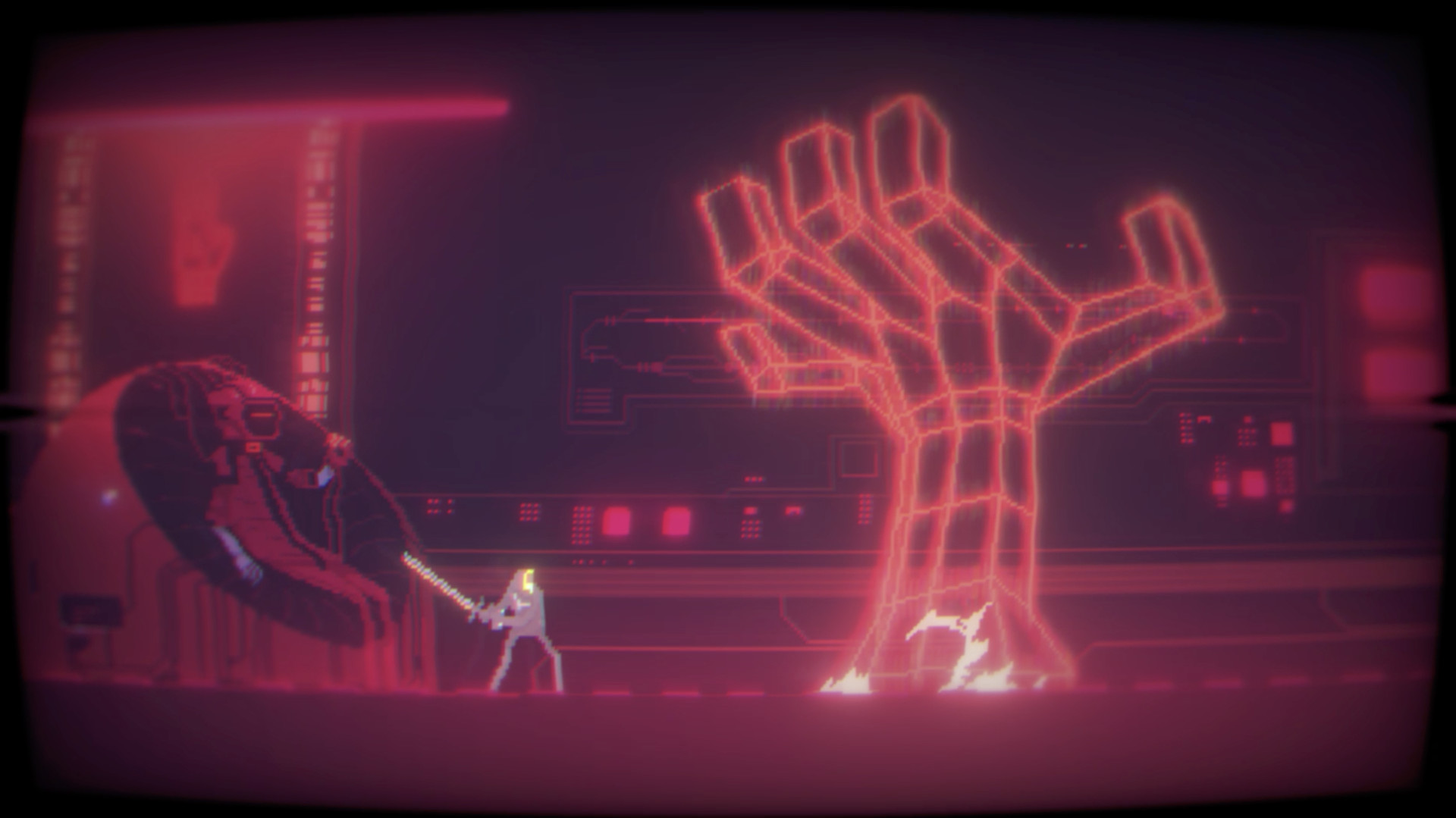
As the game unfolds, you have to help Narita Boy navigate the Digital World and use the Technosword to overcome the threat of evil programs known as the Stallions. Powered by the three beams of the Trichroma, the energy that holds the Digital World together, the wielder of the Technosword is heralded as a hero from beyond the code who can save the world when no-one else can. You’re guided by the benevolent Motherboard program who explains the history of the Digital World and leads you to other synthetic characters who can help you power up the Technosword to overcome the threat of HIM and his corruption.
The characters are very stylishly put together, with gangly, cable-like limbs connected to chunky bodies and heads cobbled together from old computers and CRT monitors. Even the wildlife in the Digital World is portrayed this way, with a nod to Philip K Dick’s famous electric sheep added for sci-fi historians. This ‘faceless machine’ look is very disconcerting, and is at odds with characters who are portrayed as being deeply emotional and far from a collection of unfeeling circuit boards. In fact, this emotion permeates the entire story; as Motherboard steers you through the events of the Digital World, Narita Boy uncovers the memories of the programmer (or Creator, as he’s known) which reveals a sombre backstory that I was certainly not expecting when I picked up the game. Walking through the black and white still images of the Creator’s memories are incredibly evocative, as well as beautifully depicted, and I couldn’t help but take a million screenshots to remind me of my time with Narita Boy long after the gameplay was over.
While the characters and story certainly deserve a huge amount of praise, there may be a few players who are put off by the sheer amount of computer jargon that’s thrown at you through the course of the game. Presented as vague terms of mysticism, coding is effectively religion in Narita Boy, and while incredibly characterful, references to strings, variables and data-dumps might leave your head spinning. To be clear, there’s no need for you to really understand any of what the NPCs are preaching about, but players with no knowledge of technical speak might find it more daunting than the fantasy equivalents of gods, shrines, and magic etc.
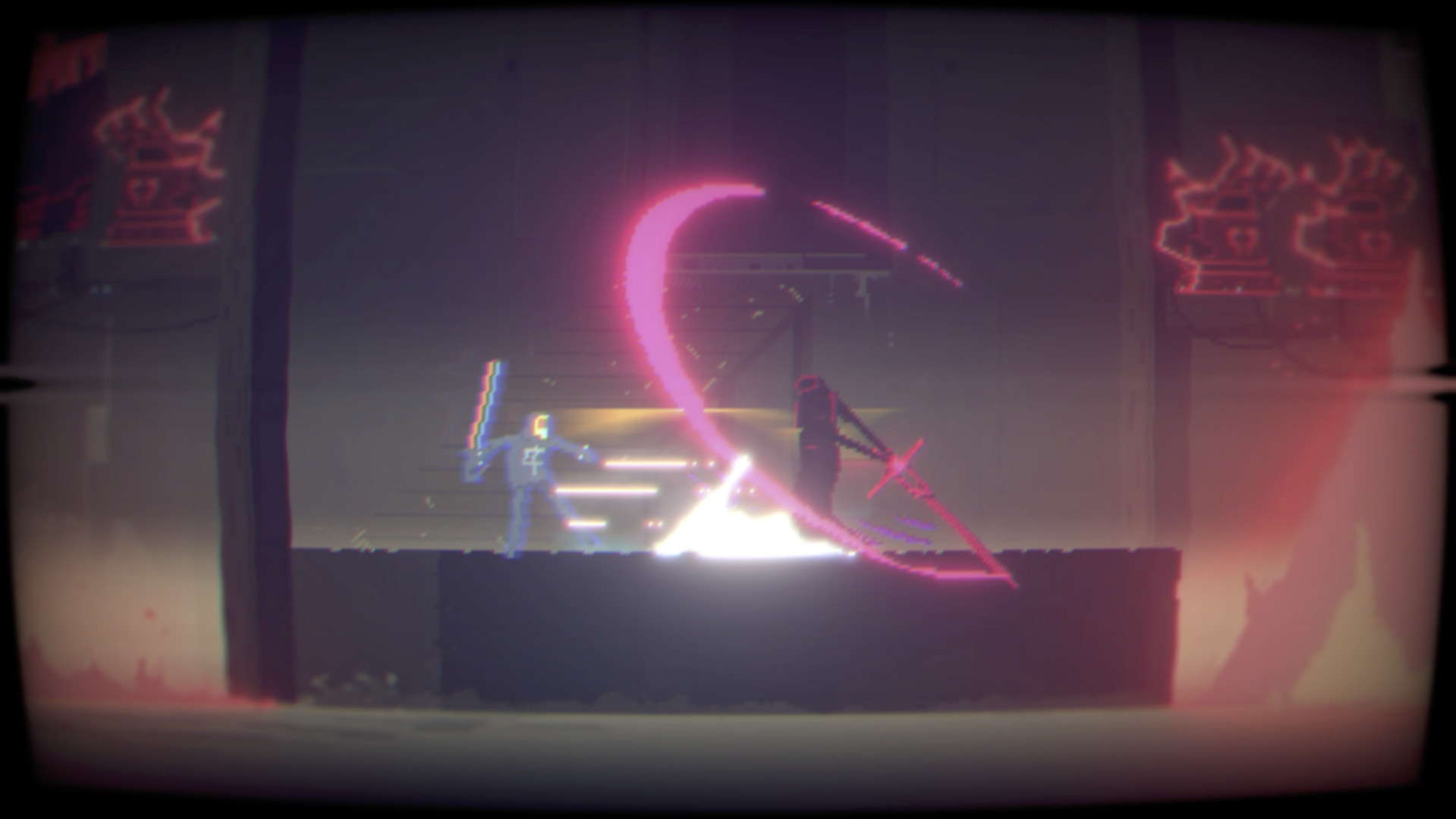
As I’m gushing over the artistic side of Narita Boy, I need to ensure I don’t neglect the gameplay which is a lot of fun too. Simple combat mechanics make battling your way through the Stallion ranks easy enough, but there’s some fun upgrades that give you special moves to help take out enemies with greater ease as the game progresses. Most interesting of the standard combat mechanics is the ability to focus one of the beams of the Trichroma, aligning Narita Boy with the power of Yellow, Red, or Blue. For a short time this allows you to deal double damage to enemies of the corresponding colour, but you have to be careful because you’ll take twice as much damage from them too, should you get hit. There are even Streets of Rage-style special attacks that allow Narita Boy to summon one of the three legendary ‘Dudes of the Trichroma’, who can lay waste to every enemy on the screen once you’ve built your power gauge up enough.
One of the few chinks I found in the armour of Narita Boy was that some of the button responses felt either delayed, or locked out for too long following a special move in combat. Many of the enemy attack patterns require you to adopt a hit-and-run style and I sometimes found myself getting frustrated that the game wasn’t able to keep up with my quick fingers, resulting in me taking damage by virtue of dodge not activating when I felt that it should. In contrast, the movement was sometimes a little over enthusiastic, with the response on screen far exceeding the amount of pressure I put on the left analogue stick, leading me to miss a few simple jumps and ending in the drink, or charging right into an enemy instead of just getting into striking distance. (Though in fairness, playing this on the Switch and using a joy con rather than a pro controller, it’s very possible that this was down to the shortness of the Nintendo stick and not Narita Boy itself.)
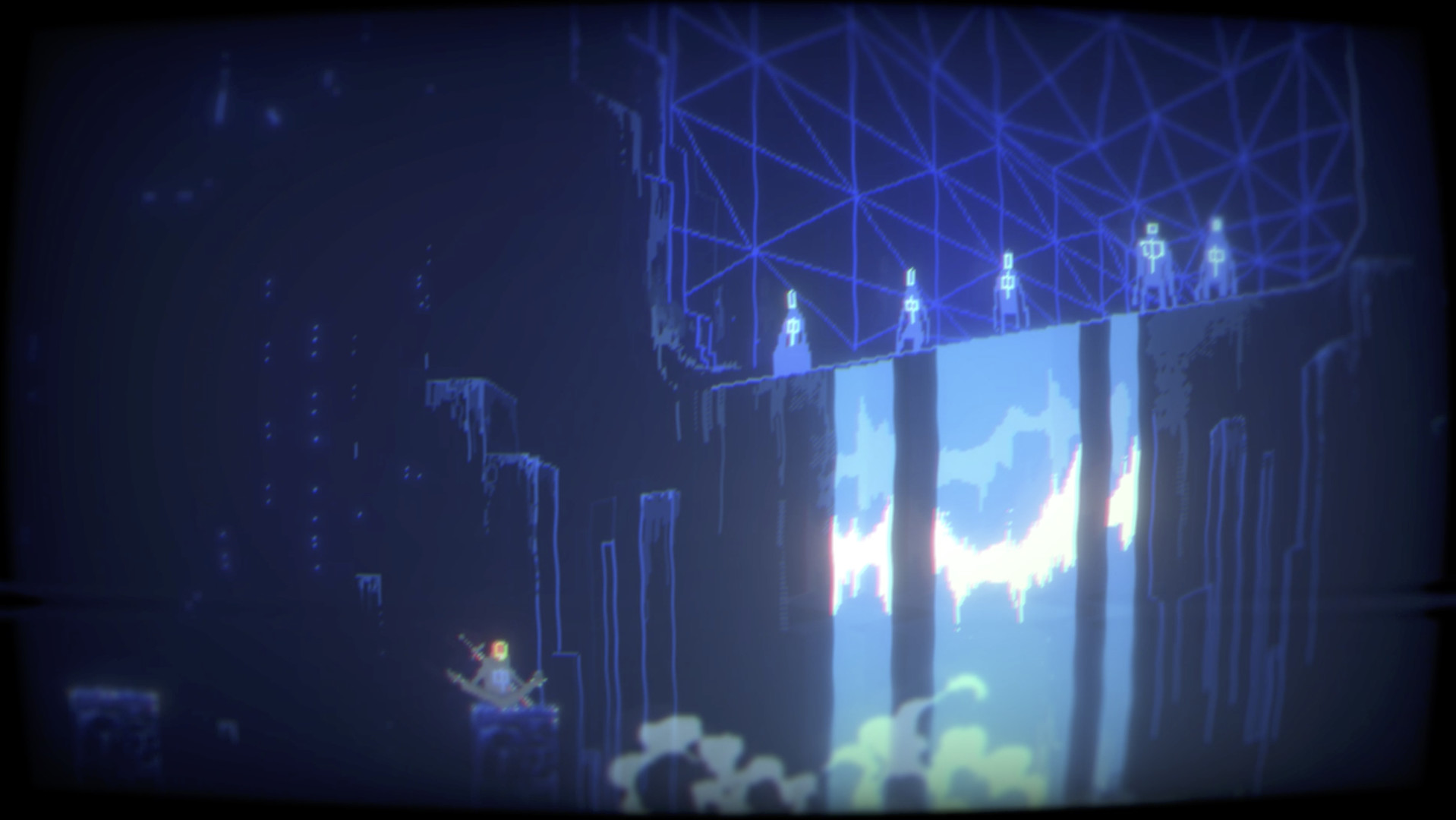
While the combat is plentiful and there’s a roster of varied and stylish enemies and bosses to fight, the platforming and exploration scenes are less diverse. Much of the traversal revolves around very simple fetch-quests that ask Narita Boy to collect keys that are stashed a few rooms away, and once you retrieve that key, you’re inevitably asked to collect another one to progress any farther. This repetition doesn’t really hamper the fun though, with the objectives simply giving the player a reason to navigate the myriad of striking areas in the Digital World. The culmination of each level also sees Narita Boy collect an upgrade to his traversal, with each one progressively cooler than the last. From the servo horse that allows you to gallop through the wasteland, the Floppy Board that allows you to surf on the digital waterways, to the ‘Big N’ that turns Narita Boy into a Kaiju smashing super robot, the transition scenes between worlds are incredibly characterful and always put a beaming smile on my face.
In the end, Narita Boy delivers in almost every facet and I thoroughly enjoyed my time facing down the Stallion threat. But while it’s positively dripping with 80s nostalgia and style, there’s a lot more to it than just a trip down memory lane – and the fun sword fighting and exploration into a spectacular universe is only the half of it. There’s a wonderful human element to the story that will tug on the heartstrings of anyone who’s ever felt the companionship of a video game, and that’s what will leave a lasting impression on me, more so than the stunning visuals and musical score. I have become a Son of the Trichroma, and I’d implore you to give Narita Boy a try for yourself to see if you become a disciple as well.
